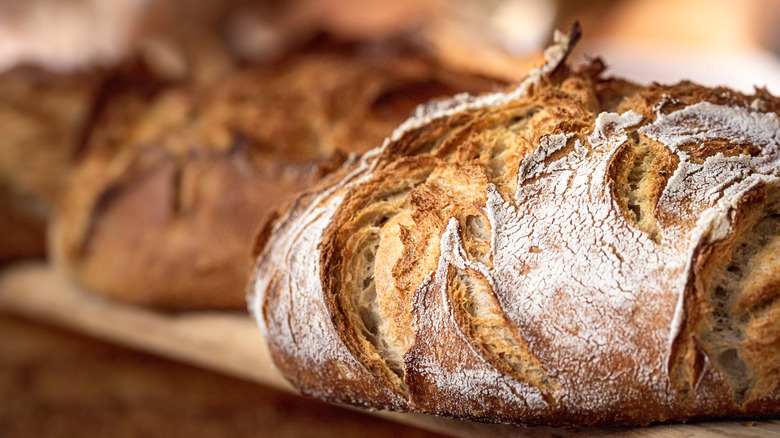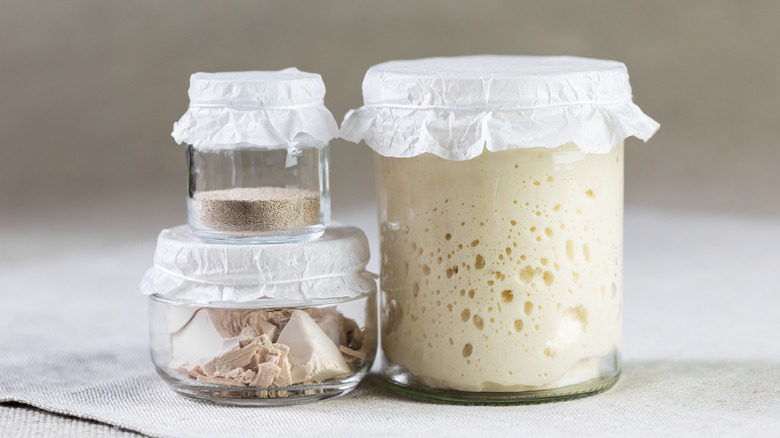Are Fresh Yeast And Dried Interchangeable For Baking Bread?
Whether you're making your first loaf of sandwich bread, experimenting with no-knead bread for the first time, crafting Belgian yeasted waffles, or finally perfecting the baguette, when you're baking with yeast, it's important to have the right kind.
Not every bread will call for yeast, but those that do are dependent on it. According to Red Star Yeast, yeast is a microscopic, single-celled organism that is used as a leavening agent in baking. It uses the sugars in dough as food to undergo a fermentation process that produces gasses and compounds like carbon dioxide and ethyl alcohol. These compounds are what help bread to rise as the gasses are trapped inside the gluten and lend yeasted breads their signature flavor and aroma.
The three most common types of yeast found in grocery stores are dry, instant, and fresh yeast. Dry yeast is a fine powder of dried out yeast cells that need to be rehydrated before use. Dry and instant yeasts are mostly the same, instant is just faster because it is ground into a more fine powder (via Masterclass). Fresh yeast, on the other hand, is sold as blocks of moist yeast cakes that don't need to be rehydrated, but have a much shorter shelf life. Kitchen Stories says that many bakers prefer fresh yeast to dry varieties, but are they really that different?
Dried yeasts storage benefits trump any differences in taste
According to Kitchen Stories, some bakers prefer fresh yeast for its "richer, slightly sweeter" flavor and its superior leavening abilities. Bake Club also says that it prefers the texture of leavened breads made with fresh yeast. It says that fresh yeast works better for doughs that require long, slow rises because it tends to stay active for longer lengths of time. Masterclass notes that dried yeast is actually coated in dead yeast cells, which reduce its population by one quarter. That coating also slows down the fermentation slightly, though most recipes will call for rehydrating the yeast and giving it sufficient time to activate before adding it to the dough.
If fresh yeast really provides these benefits though, they might be subtle at best. In its test between the two, The Kitchn found that dried yeast held up well compared to fresh yeast. It reported minimal differences in flavor or texture, and says that the added convenience of dried yeast puts it ahead in its opinion. When stored properly, dried yeast that's been opened can last up to four months in the refrigerator and six months when frozen (via Bob's Red Mill). Fresh yeast, on the other hand, only lasts for about two weeks when refrigerated, per The Kitchn.
Spruce Eats also points out that the two yeasts are mostly interchangeable. Just be sure to use an accurate conversion from the original recipe to whichever form you prefer.

